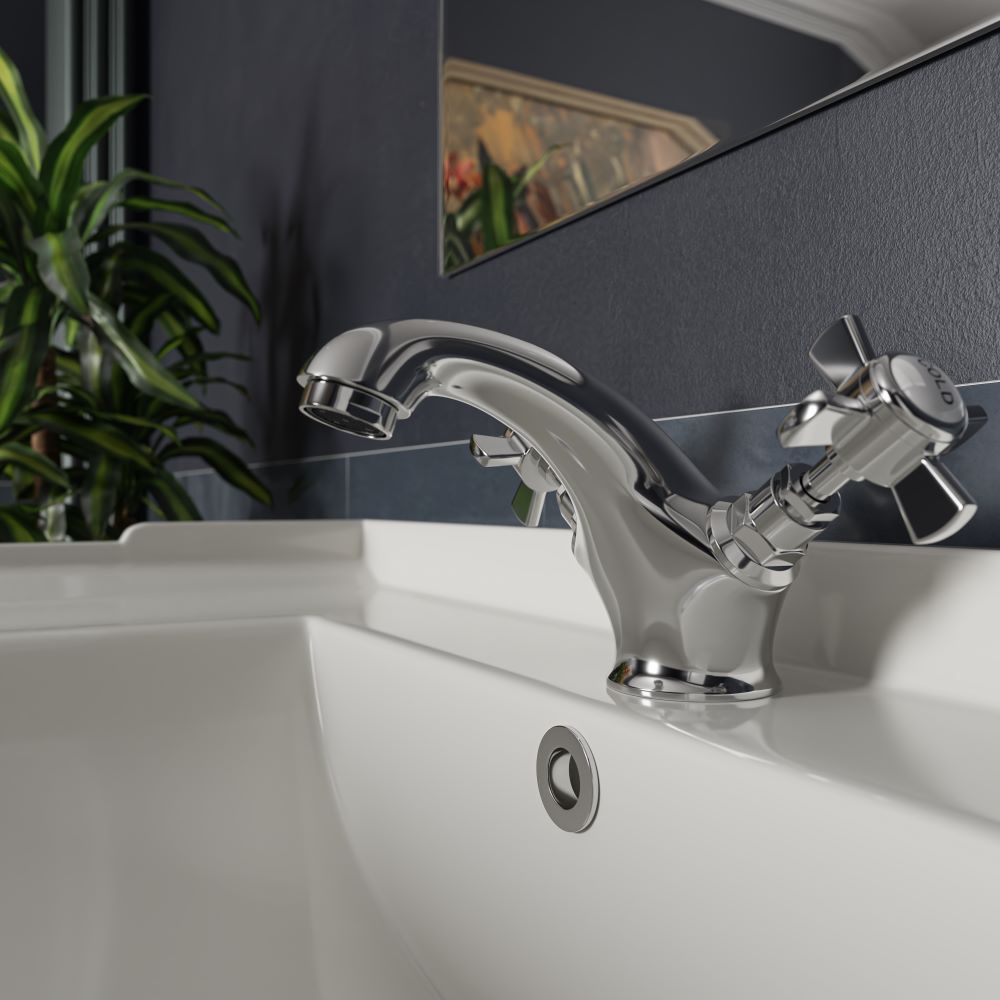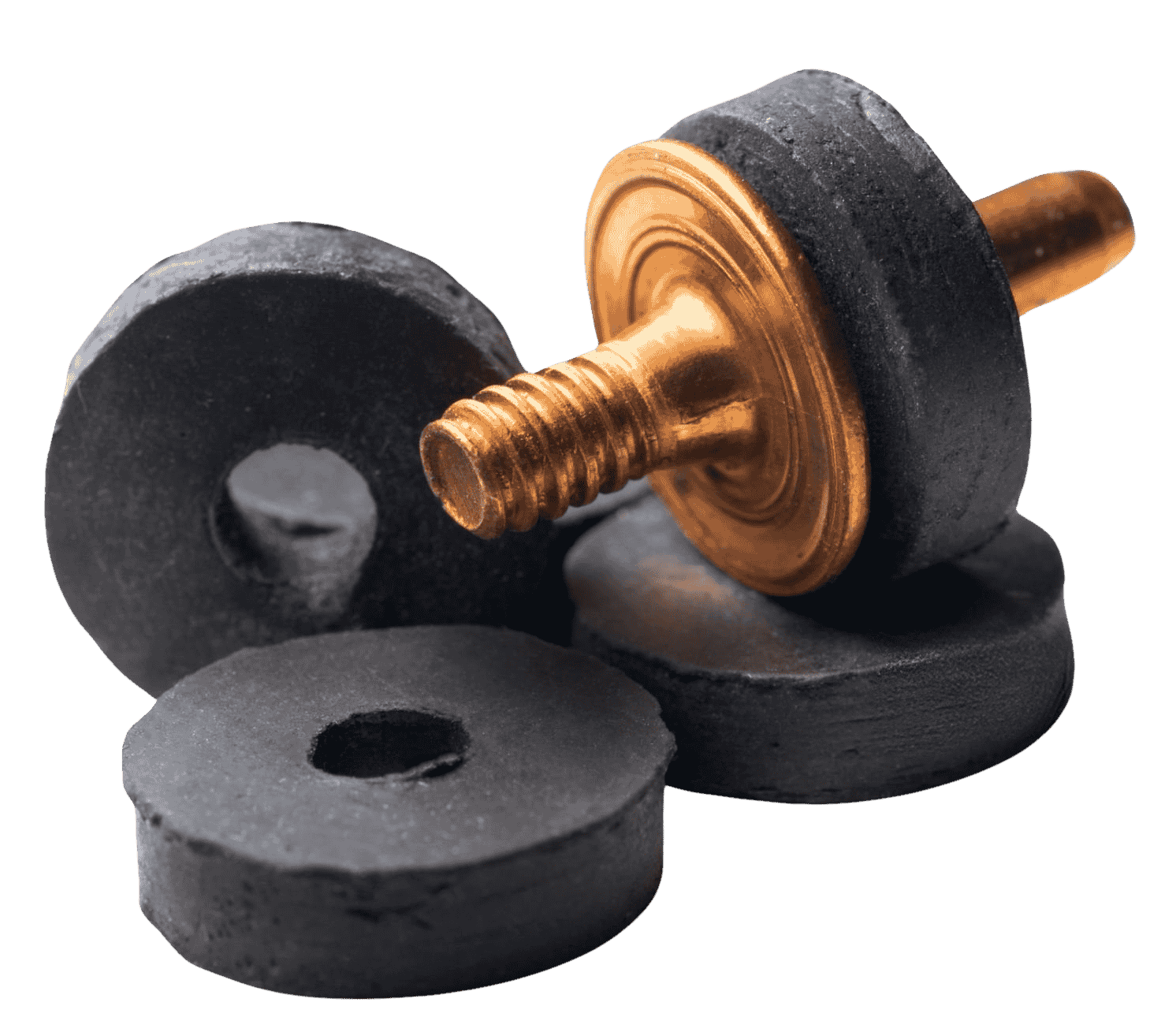How to Replace a Bathroom Tap Washer: Stop the Drip in 5 Simple Steps
7th Jan 2025

There's nothing worse than a dripping tap. Whether it's the rhythmic sound that won't let you sleep or your bills creeping up due to water waste, it's safe to say a drip is a real pain.
Thankfully, fixing the issue is usually a quick and easy job that requires replacing the tap washer. This small component may not seem like much, but it can be the key to stopping a leak and keeping your taps in top shape.
In this guide, we'll walk you through replacing a tap washer in just a few simple steps. We'll also share expert tips and tricks from Brian Toward, Chief Executive Officer (CEO) here at Wholesale Domestic, to help you get the job done smoothly.
Contents
- What does a tap washer do?
- Why would a tap washer need to be replaced?
- What types of tap washers are there?
- Where is the tap washer located?
- How to replace a tap washer in 5 simple steps
What does a tap washer do?

A tap washer is an essential component of your tap that you've likely never actually seen. It sits snugly inside the tap, pressing down against the water outlet to block the supply when not in use. This creates a watertight seal, meaning there's only a flow of water when it's needed.
Without a functioning washer, even the best taps can end up dripping over time, leading to water waste and rising bills. Unfortunately, general wear and tear can make your washer less effective over time, so keep an eye on your taps to ensure you're replacing the washer if needed.
Why would a tap washer need to be replaced?
There are a few tell-tale signs that it's time to replace your tap washer. These include:
- Constant dripping – If your tap won't stop dripping, even when you've tightened it fully, this usually means the washer isn't sealing properly and needs replacing.
- Difficulty turning the tap on or off – If you've noticed that the tap feels stiff or hard to turn, the washer may be worn down or damaged.
- Limescale buildup – A lot of limescale around the tap can suggest that the washer has become faulty. Regular deep cleaning can help prevent limescale buildup and extend the lifespan of your taps.
While ignoring a drip in an area you don't use very often may be tempting, leaving it alone can have costly consequences. Taps that constantly leak can waste over 5,500 litres per year – that's enough to fill a paddling pool each week for a whole summer!
This can, of course, significantly increase your water bill, so addressing a drip as soon as possible is essential.
Brian says: “Usually, there are signs that a tap washer is on its way out before you've wasted too much water, whether it's a noticeable drip or you're straining to turn the tap on. Catching a faulty washer early on can prevent high water bills down the line.”
“This is especially true if it's a hot water tap, as you're not only wasting water but also adding extra costs to your energy bill.”
What types of tap washers are there?
There are various types of tap washers available, each designed to suit specific tap styles. When you're replacing your existing washer, it's vital to choose the right type for your tap to ensure the seal is tight enough and prevent leaks.
Here are some of the most common types and when you’d use them:
- Flat washers – Circular and flat, typically made from rubber, nylon or other synthetic materials, these washers are used in most standard taps and are ideal for creating a strong seal, particularly in models with a high water flow rate.
- Cone washers – These are slightly conical in shape and often made of rubber. Cone washers are best for low-flow taps, as their tapered design creates a tighter fit that helps control water flow more effectively.
- Fibre washers – Made from materials like felt, fibre washers expand slightly when exposed to water, forming a reliable seal. They're ideal for hot water taps as they can handle higher temperatures without degrading as quickly as rubber washers might.
- Ceramic tap washers – Created for ceramic disc taps, these washers are built to withstand long-term use. Unlike traditional washers, they don't provide a typical seal but instead work within the ceramic disc mechanism to control water flow.
- Ball washers – Used in single-lever mixer taps, ball washers have multiple chambers to adjust water flow and temperature. They're fitted with rubber O-rings and spring-loaded seals to maintain a watertight connection and ensure smooth operation.
Where is the tap washer located?
The tap washer is usually found at the bottom of the valve. When you remove the tap head and unscrew the valve, you'll notice a small black or rubber washer that's held in place by a screw or nut.
In most taps, the washer is relatively easy to spot and access once the tap valve is removed, so locating it should be easy.
How to replace a tap washer in 5 simple steps
Whether you're a seasoned DIY-er or just getting started, replacing a tap washer is a simple task. The great news is that the process stays the same for regular taps or mixer models, meaning your sink will be drip-free in no time.
However, it's important to note that if you use a ceramic or ball washer, these cannot be changed out individually. If you're experiencing a leak or drip from a tap with these washers, you'll need to replace your entire tap.
What you'll need
Changing your tap washer requires a few basic tools, some of which you might already have lying around at home. To replace a washer, you'll need:
- Flat-head screwdriver
- Old cloth
- Adjustable spanner
- New washer
A step-by-step guide to replacing your tap washer
Once you've gathered all the tools needed, it's time to start fixing that dripping tap.
1. Turn off the water supply
Before replacing your tap washer, you'll need to shut off the water supply to prevent any spillage while you're working.
Locate the isolation valve under the sink or, if you're replacing the washer in your bath taps, turn off the main water supply for your home.
Once the water is off, turn on the tap to drain any remaining water in the pipes.
Brian says: “Turning off the water is crucial to avoid any spills while you work. It may also be useful to have an old cloth or towel to hand, just in case there's any residual water left in the pipes.”
2. Remove the tap head
With the water supply off, it's time to remove the tap head.
First, place the plug in the basin waste to catch any screws.
Brian advises: “It's easy to lose small screws or nuts that you'll need later on, so putting the plug in the basin waste will save you from needing to fish out anything that might fall down the drain.”
Most tap heads are secured with a small screw, which is usually hidden under the decorative cap on the top of the tap. Use a flat-head screwdriver to gently pop off the cap, which will reveal the screw. Then, unscrew and carefully lift the tap head off.
“Just remember to take your time with this step to avoid scratching the tap head," Brian adds.
3. Take off the tap valve
Next, you'll need to remove the tap valve which holds the washer in place.
To do this, use an adjustable spanner and carefully loosen the valve. Once it's loose, you should be able to unscrew it the rest of the way by hand and lift it out.
“If the valve feels stiff or difficult to turn, don't force it, as that can damage the tap,” explains Brian. “Try giving it a few gentle turns to work it loose, and if needed, apply a bit of lubricant beforehand to help with any rust.”
4. Remove the tap washer
With the tap valve removed, you'll be able to see the tap washer sitting at the bottom of the valve. The washer is usually held in place by either a small screw or nut.
Use your screwdriver to undo the screw and take out the old washer carefully.
Brian says: “This is a good time to inspect the area around the washer for any limescale or rust, which can impact how well the new washer fits.”
“If there's any buildup, gently clean it off with a damp cloth. However, if there's rust, you may need to use a rust-removing product. This will help the new washer form a tighter seal and prevent future leaks.”
5. Install your new washer
Place the new tap washer in the same position as the old one, fixing it in place with the screw or nut you removed earlier.
Once the washer's in place, reattach the tap valve by screwing it back in with your spanner.
Then fit the tap head back onto the valve, tightening the small screw and replacing any decorative caps.
Brian notes: “After installing your new tap washer, it's a good idea to turn the water supply back on gradually by opening the isolation valve slowly to check for leaks.”
“Fully open the tap to release any trapped air, then close it to make sure the new washer forms a watertight seal. This will help you check that the dripping has stopped.”
Explore new taps at Wholesale Domestic
If you're still dealing with a dripping tap after replacing the washer, it might be time to upgrade your taps. Replacing your taps will not only solve those pesky leaks but also give your bathroom or kitchen a fresh, new look.
At Wholesale Domestic, we offer a wide range of modern and traditional options to suit any space. Whether you're replacing your bath taps, basin taps, or kitchen taps, we've got styles to complement your interior design and budget. If you're looking for a full revamp, we also have a variety of basins and baths to complete your setup.
Need help deciding which tap is right for you? Read our basin tap buying guide, or contact our team for advice. Or, for more helpful guides and bathroom inspiration, read our blog.

 FREE delivery over £500*
FREE delivery over £500* Visit our showrooms
Visit our showrooms Finance options available*
Finance options available* Apply for a Trade Account
Apply for a Trade Account